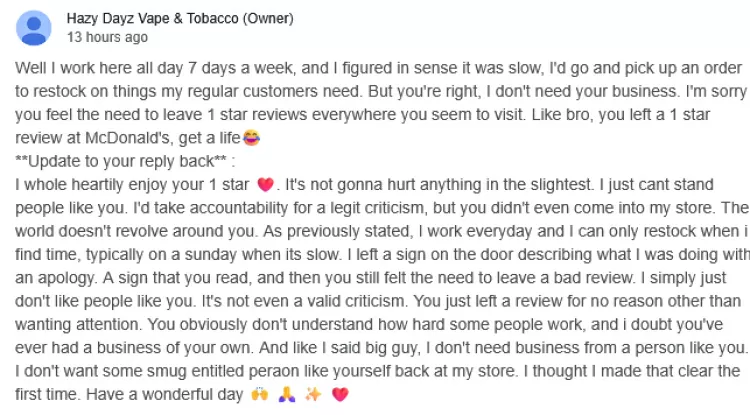Protecting Your Finances: How to Avoid Crypto Scam Sites
In a world where technology and connectivity are an integral part of our daily lives, scams and fraudulent activities have unfortunately become more sophisticated and prevalent.

The world of cryptocurrencies has gained immense popularity in recent years. As more individuals invest in digital assets, scammers have devised clever ways to exploit the crypto frenzy. Crypto scams and fake videos on social media are prevalent, making it crucial for investors to be vigilant and informed. In this blog post, we'll discuss how to avoid crypto scam sites and identify fake videos on social media to protect your hard-earned money.
Part I: Avoiding Crypto Scam Sites
- Do Your Research:
Before investing in any cryptocurrency project or trading platform, thorough research is key. Look for reviews, check the background of the team, and search for any red flags. Scammers often create professional-looking websites to deceive users, so a critical eye is necessary.
- Verify URLs:
Scammers frequently create websites that mimic legitimate crypto platforms. Double-check the URL, ensuring it's spelled correctly and that it uses secure HTTPS. Be cautious of typos or strange domain extensions, as these can be telltale signs of a scam.
- Beware of Unrealistic Promises:
If a website promises guaranteed returns that seem too good to be true, it's likely a scam. Cryptocurrency investments carry risks, and there are no guarantees. Avoid platforms that promise huge profits with no risk involved.
- Use Reputable Exchanges:
Stick to well-known and reputable cryptocurrency exchanges when buying or trading digital assets. These platforms have security measures in place to protect your investments.
- Keep Your Private Keys Safe:
Never share your private keys or personal information with anyone online. Scammers can use this information to steal your funds.
- Be Wary of Unsolicited Messages:
If you receive unsolicited emails or messages promoting a crypto platform or investment opportunity, be cautious. Scammers often target potential victims via email, social media, or even text messages.
Part II: Identifying Fake Videos on Social Media
- Check the Source:
When you come across a video promoting a cryptocurrency project on social media, start by verifying the source. Is the video shared by a reputable cryptocurrency account or an official project account, or is it from an unfamiliar source?
- Scrutinize the Content:
Watch the video carefully and evaluate its content. Fake videos often promise guaranteed profits, feature unrealistic testimonials, or use misleading information to attract viewers.
- Verify Comments and Interactions:
Look at the comments and interactions on the video. If it's full of accounts praising the project without any critical comments or questions, it may be a red flag. Real projects have open discussions with their communities.
- Cross-Check Information:
Don't take the information in the video at face value. Verify the claims made in the video by researching the project on reliable cryptocurrency news websites or forums.
- Investigate the Project's Website:
If a video piques your interest, go to the project's official website or social media channels. Genuine projects provide extensive information about their team, technology, and vision.
- Avoid Clicking on Suspect Links:
Be cautious of any links shared in the video description. Clicking on unverified links can lead you to phishing websites or malware. Always visit the official project's website directly.
Recognizing Scam Promos Across Social Media
The scamer leverages multiple social platforms like TikTok, Facebook, and Instagram in their promotional campaigns to reach wider audiences with their fraudulent offers and deepfakes.
Here are tips to spot their scam posts on each platform:
TikTok Red Flags
- AI deep fake videos of celebrities announcing the scam offer
- Flashing images of money and luxury items
- Fake wealth screenshots edited to show the site
- Aggressive link spam and call-to-action overlays
- Incentivized comments from bots and fake followers
Facebook Warning Signs
- Celebrity images stolen from other sites now endorsing the scam site
- Obvious photoshopped images of public figures with the branding
- ads and posts using clickbait headlines
- Comments full of spammy referral links and bots
- Suspicious engagement for the page and posts
Instagram Warning Signs
- Repurposed celebrity deepfakes from TikTok
- Nepotistic tag spam from large bot follower networks
- handle tagged on unrelated popular posts
- Fake endorsements using edited/stolen celebrity photos
- Link spam and aggressive call-to-action captions
The best practice is to avoid any investment opportunity promoted heavily on social media alone, without proper registration or documentation. All legitimate businesses will have contact details and owners clearly listed on their official domain.
Here are 10 basic security tips to help you avoid malware and protect your device:
-
Use a good antivirus and keep it up-to-date.
It's essential to use a good quality antivirus and keep it up-to-date to stay ahead of the latest cyber threats. We are huge fans of Malwarebytes Premium and use it on all of our devices, including Windows and Mac computers as well as our mobile devices. Malwarebytes sits beside your traditional antivirus, filling in any gaps in its defenses, and providing extra protection against sneakier security threats.
-
Keep software and operating systems up-to-date.
Keep your operating system and apps up to date. Whenever an update is released for your device, download and install it right away. These updates often include security fixes, vulnerability patches, and other necessary maintenance.
-
Be careful when installing programs and apps.
Pay close attention to installation screens and license agreements when installing software. Custom or advanced installation options will often disclose any third-party software that is also being installed. Take great care in every stage of the process and make sure you know what it is you're agreeing to before you click "Next."
-
Install an ad blocker.
Use a browser-based content blocker, like AdBlocker Ultimate. Content blockers help stop malicious ads, Trojans, phishing, and other undesirable content that an antivirus product alone may not stop. A good one like AdBlocker Ultimate lets you whitelist sites like ours to still show ads so you can help support the sites you like while avoiding the ones you don't.
-
Be careful what you download.
A top goal of cybercriminals is to trick you into downloading malware—programs or apps that carry malware or try to steal information. This malware can be disguised as an app: anything from a popular game to something that checks traffic or the weather.
-
Be alert for people trying to trick you.
Whether it's your email, phone, messenger, or other applications, always be alert and on guard for someone trying to trick you into clicking on links or replying to messages. Remember that it's easy to spoof phone numbers, so a familiar name or number doesn't make messages more trustworthy.
-
Back up your data.
Back up your data frequently and check that your backup data can be restored. You can do this manually on an external HDD/USB stick, or automatically using backup software. This is also the best way to counter ransomware. Never connect the backup drive to a computer if you suspect that the computer is infected with malware.
-
Choose strong passwords.
Use strong and unique passwords for each of your accounts. Avoid using personal information or easily guessable words in your passwords. Enable two-factor authentication (2FA) on your accounts whenever possible.
-
Be careful where you click.
Be cautious when clicking on links or downloading attachments from unknown sources. These could potentially contain malware or phishing scams. A good anti-virus software can help you to avoid this as well.
-
Don't use pirated software.
Avoid using Peer-to-Peer (P2P) file-sharing programs, keygens, cracks, and other pirated software that can often compromise your data, privacy, or both.
To avoid potential dangers on the internet, it's important to follow these 10 basic safety rules. By doing so, you can protect yourself from many of the unpleasant surprises that can arise when using the web.
Here are some bonus tips that may help you:
Visiting pornographic and pirate websites can put your computer and personal information at risk of getting infected with viruses and other types of malware for several reasons:
-
Unregulated Content: Many pornographic websites operate in legal gray areas or outside the boundaries of legality, making them a common hub for cybercriminals to host malicious content.
-
Lack of Regulation: Due to the nature of the content, porn and pirate websites often operate in unregulated or loosely regulated environments. This means that malicious actors may find it easier to distribute malware through these websites without much oversight.
-
Phishing and Deceptive Tactics: Some porn sites use deceptive tactics to lure users into clicking on suspicious links, pop-ups, or advertisements. These tactics can lead to users inadvertently downloading malware.
-
Malvertising: Malvertising is a common tactic where malicious advertisements are displayed on websites, including porn sites. Clicking on these ads can redirect you to a website hosting malware or initiate an automatic download of malicious files.
-
Drive-By Downloads: Some porn websites can employ drive-by download techniques, which automatically download malware onto your device without your consent or knowledge simply by visiting the site.
-
Exploiting Vulnerabilities: Cybercriminals may take advantage of vulnerabilities in your web browser or operating system when you visit a compromised pornographic website. These vulnerabilities can be used to deliver malware to your device.
-
Social Engineering: Some porn websites may use social engineering techniques to trick visitors into downloading malicious files, such as fake video codecs or adult-themed applications. Users may unknowingly install malware by thinking it's a legitimate requirement for viewing content.
-
Inadequate Website Security: Due to the controversial nature of these websites, many do not invest in strong security measures. This makes them an easier target for hackers to compromise and distribute malware.
-
User Anonymity: People who visit porn sites often prefer to remain anonymous, leading to less cautious behavior. This lack of caution can make users more vulnerable to malware threats.
To reduce the risk of getting a virus from visiting porn sites or any website, it's essential to take the following precautions:
-
Use a Reliable Antivirus Software: Install and regularly update reputable antivirus and anti-malware software to help detect and prevent malware infections.
-
Keep Your System Updated: Regularly update your operating system, web browser, and plugins to patch security vulnerabilities that malware can exploit.
-
Use Ad Blockers: Employ ad-blocker extensions in your web browser to reduce the risk of malicious advertisements.
-
Exercise Caution: Be cautious when visiting any website, especially those with controversial content. Avoid clicking on suspicious links, downloading files, or installing software from untrusted sources.
-
Use a Virtual Private Network (VPN): A VPN can add an extra layer of security and privacy by masking your IP address and encrypting your online traffic.
-
Education and Awareness: Stay informed about the latest cybersecurity threats and best practices for online safety to protect yourself and your devices effectively.
By practicing safe and responsible internet use, you can significantly reduce the risk of getting viruses or other malware from visiting pornographic websites or any other type of site.
What's Your Reaction?



















